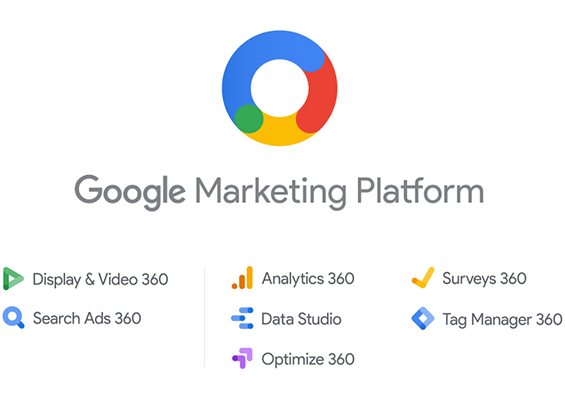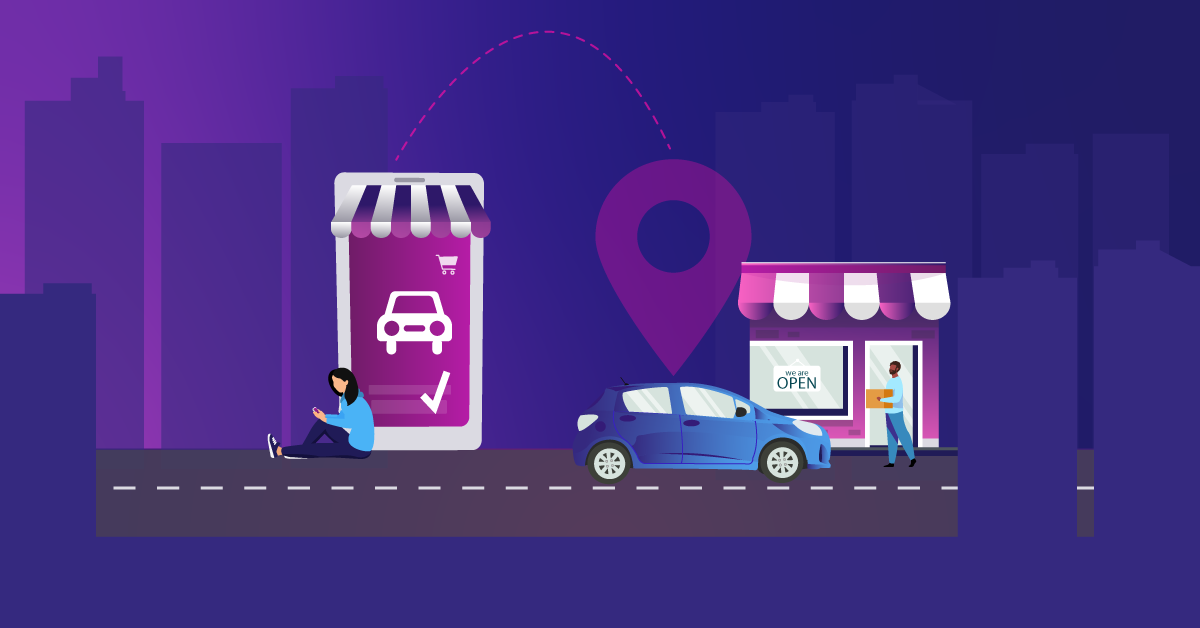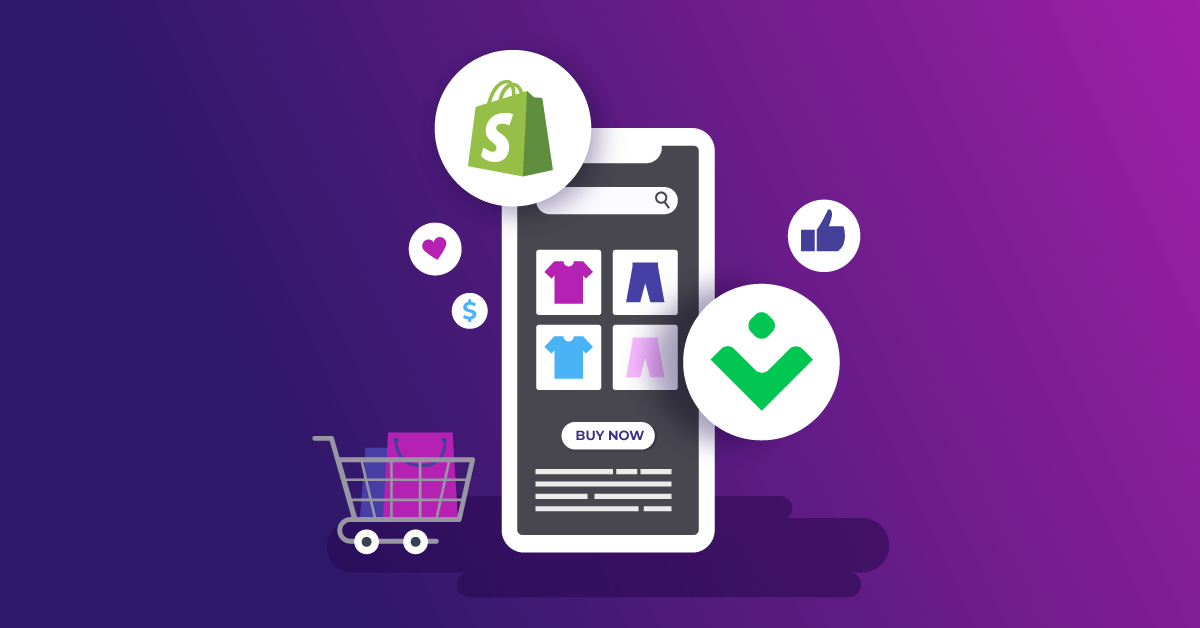Building Scaled Commerce that Drives Results with Shopify Plus & Google Marketing Platform
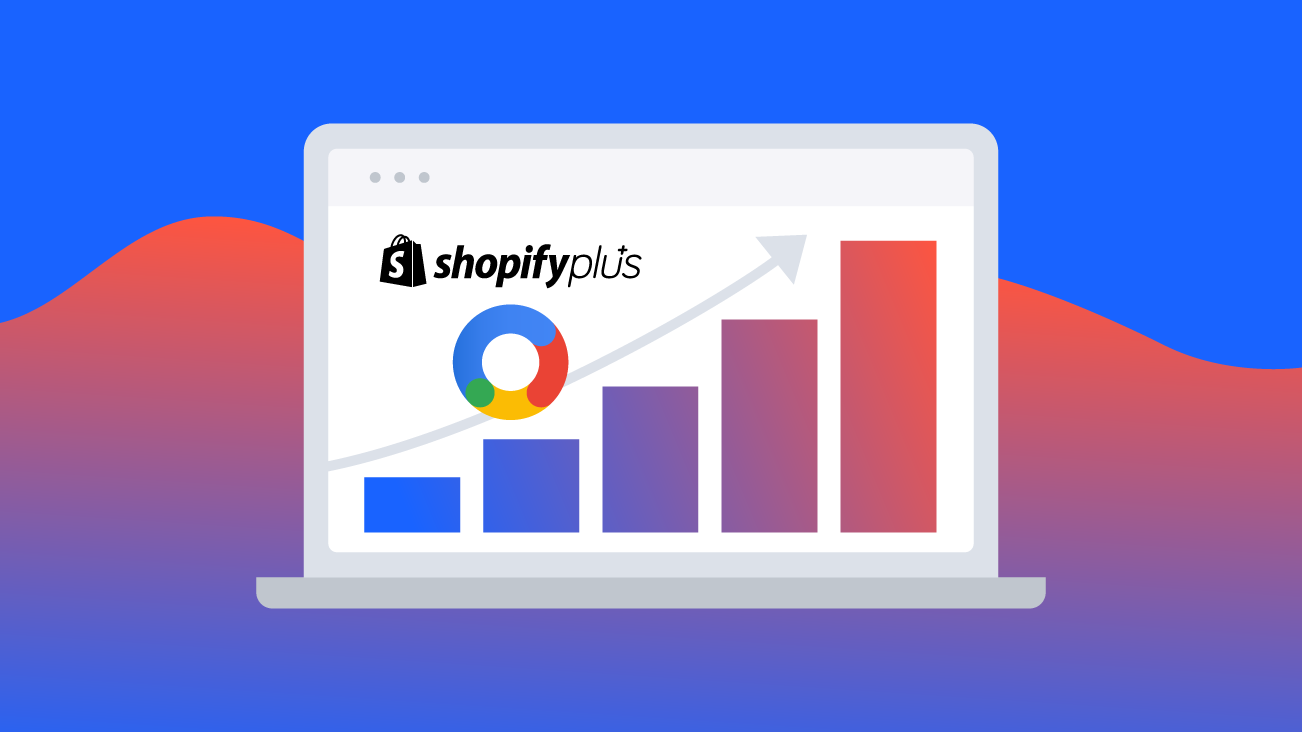
By 2021, organizations with robust, scalable digital commerce will outperform non-commerce organizations by 30 percentage points in sales growth, according to Gartner.
This statistic isn’t surprising to most retailers, but non-retail businesses, for example, services, education, and healthcare should also pay attention. The ability to scale this part of your business along with primary services is important—and having the right platforms is key to making that possible.
As your business grows, analytics and site requirements naturally become more complex, and it’s easy to forgo scalability in order to meet fast-approaching deadlines and MVP launch dates.
This creates many challenges. For example, if you’re looking to grow globally, but are stuck with a complex, custom website with an even more complex analytics and marketing setup with no ability to easily replicate, you’ll need to invest a lot of time and dollars to build each individual regional website.
In a webinar, hosted by our experts, they discuss two fundamental platforms that empower organizations to build easily scalable commerce sites, that drive results, and ultimately maximize your online revenues—Shopify Plus and Google Marketing Platform. We recommend watching the webinar when you get a chance, but we’ve also laid out the details you need to know to get started.
Watch Replay
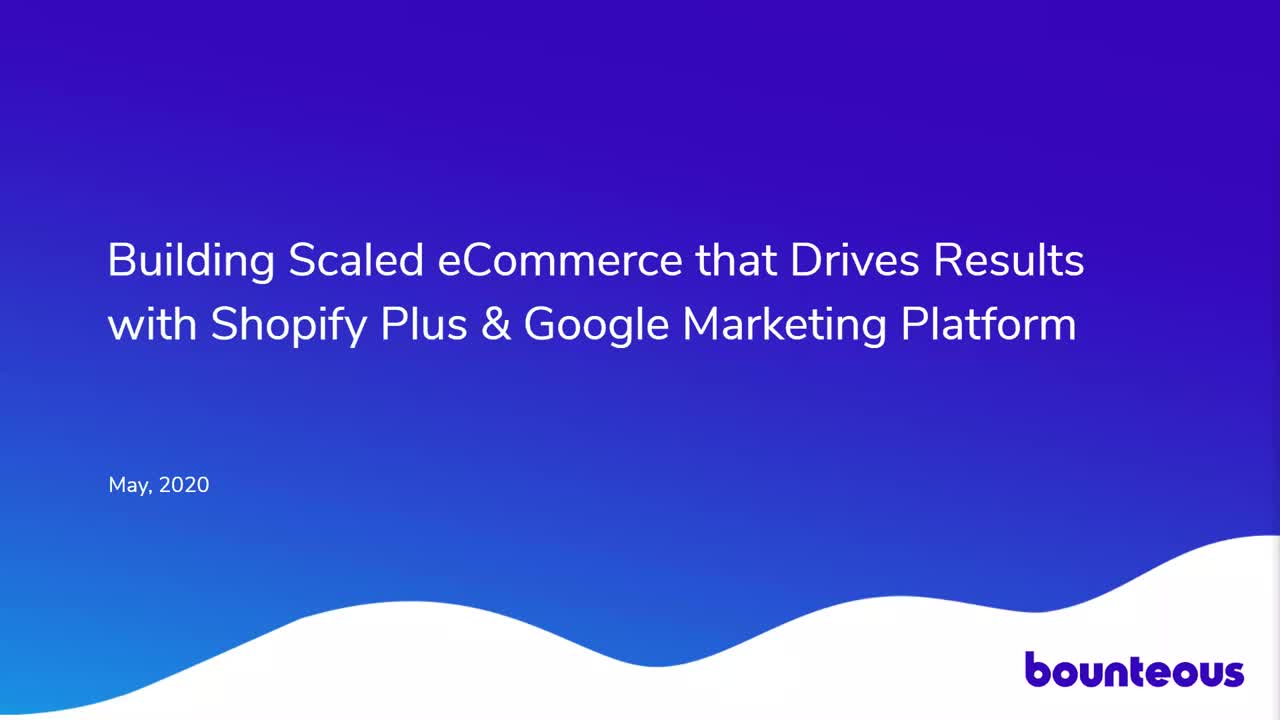
Shopify: the Commerce Platform for Scalability
Having supported over 1M businesses and $155B in sales, alongside a 99.99 percent uptime, Shopify’s capability speaks for itself. Starting at $29USD/month for Shopify Basic, businesses can grow from start-up phase to a full-blown enterprise corporation with Shopify Plus.
Of the 1M Shopify businesses that exist, about 7,000 are running on Shopify Plus—but how do you know if Shopify or Shopify Plus is right for your business?
Six Indicators Your Business is Ready for Shopify Plus
1. Generating Over 1M in Annual Online Revenue
This is normally when it makes the most sense for your business to scale to Shopify Plus, and when businesses will see the most ROI.
2. Recurring Tasks Are Consuming Too Much Time
Workflow Automation (Launchpad & Flow) can automate some of these tasks for your business users, like sales campaign automation, inventory updates, etc.
3. Ready for Global Growth
Shopify Plus provides nine free clone sites or stores allowing your businesses to replicate their site for new regions as required.
4. Commerce Staff is Growing
Shopify allows for a maximum of 15 staff accounts, with Shopify Plus, accounts are unlimited.
5. A Need to Customize Checkout
If your business is ready to optimize its checkout experience—which is something Shopify normally keeps locked for basic users. With Plus, you have access to the checkout.liquid file allowing for certain customizations, as well as Shopify Scripts which include items like BOGO, Payment Options, and more.
6. Complex Analytics Requirements
When your business has complex analytics requirements, such as unique event labeling through checkout, this is only possible with Shopify Plus.
Digital Analytics in Shopify Plus
There are several ways to track your analytics with Shopify Plus— platform reports, Google Analytics (GA), third-party software, and more. Some methods are more straightforward to set up or install, while others may require custom development.
Basic Shopify Reports
Shopify and Shopify Plus users have access to all basic reports such as Overview Dashboard and Product Analytics:
Only Advanced Shopify and Shopify Plus users have the ability to create Custom Reports, which allows you to display the exact data you need.
Basic Google Analytics Connector
GA is super easy to set up! All you have to do is copy your code from GA and paste it in:
Most businesses on Shopify Plus will also want to ensure that commerce or Enhanced Ecommerce tracking is enabled in their Shopify admin.
Please note, Enhanced Ecommerce is restricted to predetermined events. For example, businesses cannot change what a “product added to cart” or “purchase” event is labelled as without something like Google Tag Manager (GTM).
Google Tag Manager in Shopify Plus
With GTM and other types of pixel tracking, users are able to tap into the data layer, which grants the ability to change what the predetermined events are labelled as and add new, custom events to track.
Customizing these events in Shopify Plus checkout is complex, so you may need to turn to an experienced Shopify Development team.
It’s important that your Design & Development team works closely with Marketing & Analytics from initial project conception to ongoing maintenance and promotion. Analytics and tracking can all too often be an afterthought in a build, which is why Bounteous developed Activate for Shopify.
Shopify Activate by Bounteous for Enhanced Analytics
The development team at Bounteous built a proprietary base theme called Activate, providing Plus users with custom features in a fraction of the time. Activate was developed to reduce complex, custom Shopify Plus launch times.
Shopify Activate by Bounteous includes a pre-built data layer that allows for bespoke marketing needs, such as custom events and easy labelling. Pre-configured GTM recipes informed by our analytics and marketing team can also be found within Shopify Activate, targeted at enabling businesses to get the most value out of Shopify Plus.
Deep Dive Data Collection & Analysis
When it comes to analytics, you need to first think about the desired output. Different teams require different reports, which are dependent on how your data is collected. Your implementation structure matters.
- Digital marketers require reports on campaign results based on where they’re launched.
- C-Suite requires macro-level business results and KPIs. For example, total sales and total conversion rate.
- Technical analysts require reports based on what they implement—when and where.
Google Analytics vs Google Analytics 360
Google offers two versions of its analytics software, basic GA and Google Analytics 360 (GA360), an enterprise edition. Of course, with paid versions, you receive more features but It can be difficult to know which option is right for your business. Here’s a quick breakdown of what you get with GA360 and what you miss with the free version.
| What You Get | What You Miss |
|---|---|
| Pageviews | Control over Product names, SKUs, & Categories in GA |
| GA Goals | Custom interaction events |
| Commerce transactions | Other Enhanced Ecommerce features, like impressions, CTR, add to carts, etc. |
| Limited view into checkout funnel |
The out-of-the-box free GA and basic Shopify setup is a great starting point for start-ups and small businesses. However, you will usually outgrow the basic setup and may turn to a digital agency like Bounteous to help scale with more complex integrations, like our client AllBirds.com.
With AllBirds.com, we added one GTM container and data layers to their base theme across all of their regional sites (.com, .ca, .uk, .au, .jp, etc). Shopify Plus also enabled us to add custom code to their checkout pages.
This drove a successful outcome and allowed Allbirds to accomplish the following:
- Enabled the development team to complete fast and consistent releases without needing Analytics involvement all the way through.
- GA and GTM can be ready for a new site within 30-45 min of going live. Just make a new Zone, GA View, and GA filter!
- Measure the effectiveness of checkout-type and payment method to find optimal conversion and highest value.
- Data structure and implementation structure are equally important. It’s easy to find current tags as well as decide where to add future implementations.
- Powers marketing activities like A/B testing and more.
Google Analytics 360 Features
GA360 has a ton of great features that makes every data marketers life easier, including:
Customer Segments
Anonymize data and connect to GA, enabling segments by customer type and customer IDs. Segments become Audiences in Google Marketing Platform for targeted marketing!
Views & Reports
The structure of sites and products in Shopify can be replicated in GA using filters for domains. Consolidated reporting is possible due to the increased data limits in GA360.
Additional Tools
Increased Custom Dimensions and Metrics for tracking detailed product and user attributes. Advanced report options to measure custom funnels for conversions and dropoff.
Elevating Marketing Activation in 2020
Now that we covered collecting and analyzing truly enterprise data, let’s discuss how we can put it to use!
2020 has made for some unique marketing shifts based on consumer behaviours. Businesses have noticed a couple in particular.
First, inventory levels are more important than ever. Searches for “In Stock” have grown globally by 70 percent from March 28 to April 4. With Shopify Plus feed updates, you can leverage “Out of Stock” or “Limited Availability” to inform customers and keep product information fresh. Feed rules also help update information in bulk.
The second shift actually lowered shipping expectations. At this time, customers are more understanding and simply grateful for any delivery. This shift may only be temporary, so don’t shelve your 2020 fulfillment projects just yet. You should ensure shipping and delivery information is available and accurate. Many businesses have also added new features including, flexible options: curbside, in-store pickup, home delivery, etc.
Data Powers the Full Digital Experience at Every Step
Unifying data helps create additional marketing experiences. Google Marketing Platform (GMP) is a way for businesses to tie their marketing data together in one centralized location. GMP helps with Performance Advertising & Media Buying, Intelligent Remarketing, Cloud Data Modeling & Marketing Science, Real-Time Personalization & Engagement, and more.
The Right Platforms & Strategy
With the right platforms and strategy in place, marketing becomes scalable and specific. Businesses can take technology pieces like Shopify Plus and GMP, the analytics they’ve gathered, and tie it all back to marketing.
Shopify Plus provides robust product feeds that can be customized using information based on the product catalog. Data collection provides easy ad remarketing options and enables personalized messaging that can be activated through Optimize.
As a marketer, this provides a fully scaled media program, with display, programmatic, video, search, and even email. Bringing this all together allows you to make better, informed decisions.
Data-Driven Remarketing
GA360 provides great capabilities to build audiences in GA, share them with multiple platforms, and then leverage in your marketing. A few audience ideas that you can capture through data, segment, and deliver personalized messages too include:
Cart Abandonment
Audiences who are making it to checkout, but abandoning cart before finalizing a purchase. Develop personalized messaging to get that audience to commit.
Brand / Product Affinity
Audiences interested in a particular brand or product that you sell. If you’re launching a new product, re-engage that audience.
High AOV Purchaser
These are customers who checkout with a lot of items in their basket. You could possibly spend more on targeting this audience, knowing the ROI will likely be greater.
Creating these audiences in GMP, which you can then share out to various marketing channels, helps you to better target and ultimately spend more strategically for a greater return on ad spend.
Free Listings with Google Shopping
One marketing channel you should leverage for data-informed marketing is Google Shopping—who recently announced Free Listings (US Only). Google Shopping can help address some of the earlier trends we discussed, such as inventory levels. With Google Shopping Ads you can automate campaigns based on inventory levels, so if a product is running low, that ad will no longer run. It‘s important to set up this automation to ensure you aren’t selling something you don’t have!
Media Activation with GMP
When you tie all of your technology and data together it makes media buying and management easier, especially with tools like GMP. Think about how to leverage the data you have to deliver high impact media placements, and even normal display placements—how do you integrate these through native ads and in-app ads, on streaming tv and video—which is growing as more people are streaming online. Capture your potential customer at the right moment and nurture them along the buying process.
Optimize Customer Journey with Comprehensive Data
“Having this better data, provides better opportunities for businesses to optimize their checkout flow, and then ultimately increase those conversion rates and drive more revenue.” - Jayna Grassel,Senior Director, Marketing Strategy, Bounteous
Since Shopify Plus allows for custom event tracking in checkout, you and your marketing team can optimize a customer flow by making better, informed decisions. Marketers can work seamlessly with technologists to identify where customers are dropping off and optimize messaging and flow to reduce friction, making the customer’s buying experience as easy as possible.
Takeaways by Role
All organizations have different roles with unique goals and objectives when it comes to commerce and Digital Marketing. We break it down into three categories:
Digital Marketer
Digital marketers are responsible for working campaigns, looking at data, ad traffic management, maintenance, and optimization. Some things they may care about are audience targeting and making ads as efficient as possible. One of the easy ways to do that is by grouping people into audiences that can then be targeted more effectively.
Digital marketers may also care about enhanced shopping ads. By working with technology and merchandising teams, they can have the most holistic shopping ads using some of the advanced feeds that Shopify Plus offers.
C-Suite Strategist or Client
C-Suite Strategists most likely care about budgeting decisions. They’re the one who has to write the cheque for Q3 and Q4, so having a better understanding of how commerce and marketing channels are performing allows Strategists to make better decisions, which ultimately leads to a greater ROI. Having a better understanding of site performance can also help prioritize projects and develop more comprehensive roadmaps.
Technical Analyst
Technical Analysts can use this data to work back into their development sprints. It allows for a closer look at how customers are interacting with the website. With Shopify Plus, there is easy feed creation, so with a few clicks of a button, technologists can give marketers a feed and get back to coding. With GMP and GTM this is easily scalable across backends so that technologists and marketers can develop one solution that can be rolled out across the board.
Next Steps & Commerce Success Checklist
The best thing a business can do is get started! We compiled a few key next steps that can help propel a business in the right direction with Shopify Plus and Google Marketing.
| Commerce Success Checklist |
|---|
| Experience Platform |
| ⃞ Global replication |
| ⃞ Cart code customization |
| Analytics |
| ⃞ Upgrade data collection |
| ⃞ Segment audiences by behavior |
| Marketing |
| Activate audience segments |
| ⃞ Intelligent shopping |
| ⃞ Experiment & personalize |



